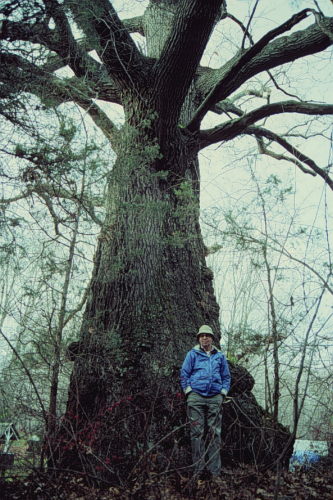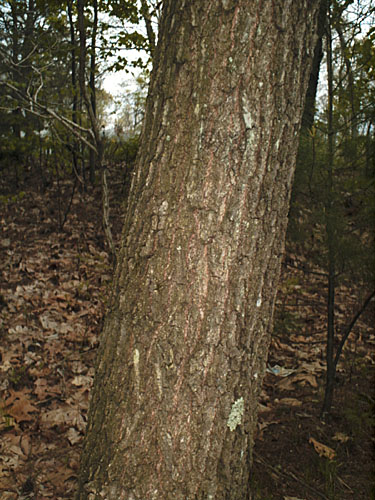Quercus velutina
Black Oak
Fagaceae
ExpandHabitat
- native to eastern and central United States
- zone 3
Habit and Form
- a medium-sized, deciduous tree
- 50 to 60' tall
- irregular spread
- pyramidal when young
- medium texture
- moderate growth rate
Summer Foliage
- alternate leaf arrangement
- simple, deciduous leaves
- leaves are 4" to 10" long
- pointed lobes
- 7 to 9 lobes per leaf
- shiny, dark green leaves
Autumn Foliage
- reddish brown fall color
Flowers
- monoecious
- male flowers are pendulous yellow-green catkins
- blooms in May
- messy
Fruit
- elongated acorn in pairs on singly
- 0.25" to 0.5" long
- acorn is ovoid in shape and striated
- bowl-like cap
Bark
- almost black bark
- vertically deeply furrowed
- inner bark is orange
- stout, reddish brown stems
- stems have a bitter taste
- young stems are pubescent
Culture
- full sun
- prefers moist, rich, well-drained, acidic soil
- transplant at a small size
- can be difficult to move and establish
- dislikes being disturbed
Landscape Use
- shade tree
- for large area
- existing native trees are often saved during construction
- long-lived and desirable
Liabilities
- slow-growing
- difficult to transplant and establish
- numerous insect and disease pests, but damage is rarely significant
ID Features
- leaves with 7 to 9 pointed lobes
- black bark
- striated acorns
Propagation
- by seed
Cultivars/Varieties
- none

